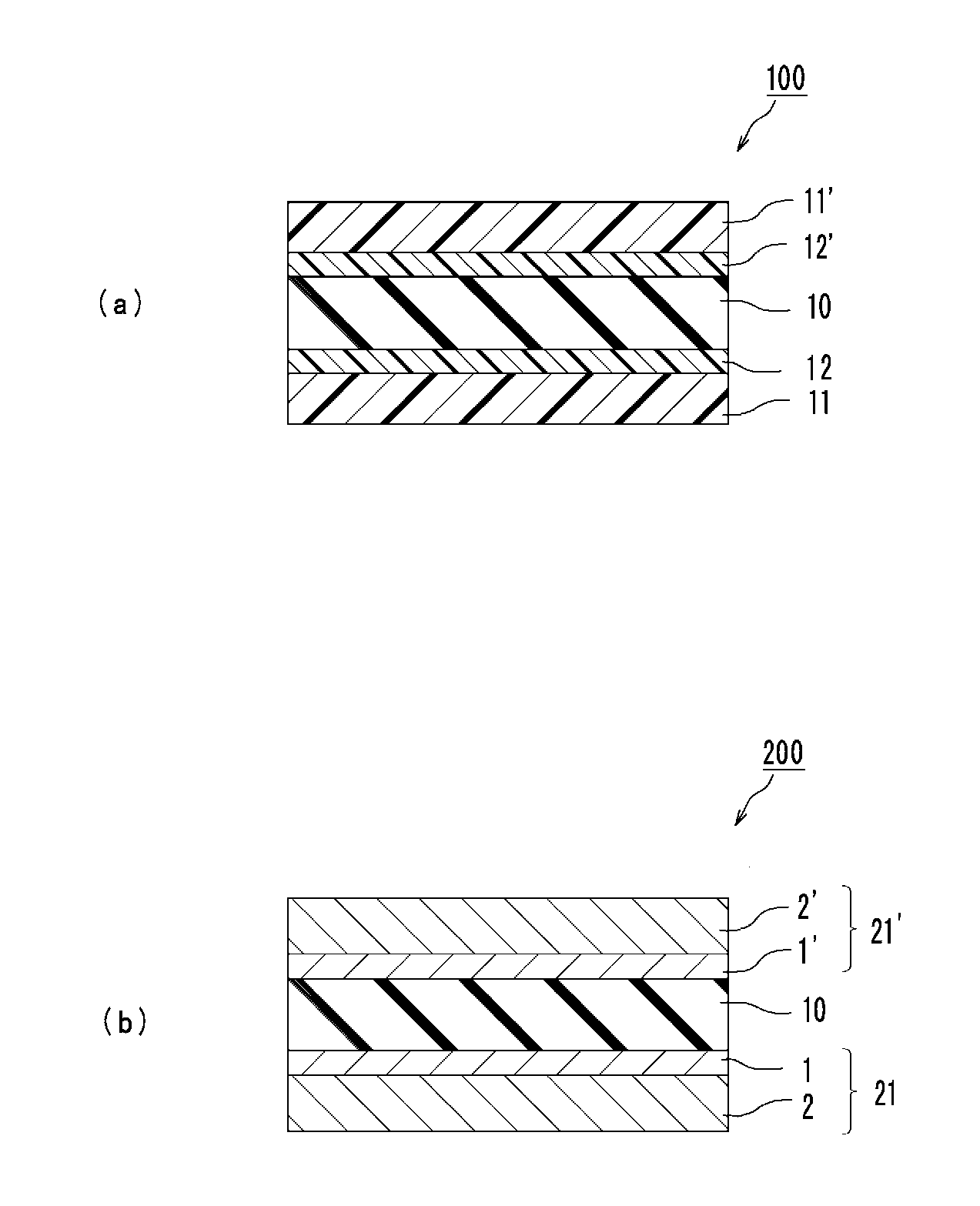Transparent substrate and method for production thereof
a technology of transparent substrate and substrate, applied in the direction of film/foil adhesives, identification means, instruments, etc., can solve the problems of insufficient methods for reinforcing glass, difficult handling of glass substrate, and general brittleness of resin, etc., to achieve excellent bending property, impact resistance, and reduce thickness
- Summary
- Abstract
- Description
- Claims
- Application Information
AI Technical Summary
Benefits of technology
Problems solved by technology
Method used
Image
Examples
example 1
[0138]36.2 g of polyethersulfone a terminal of which had been modified with a hydroxy group (terminal hydroxy group content: 1.6 terminal hydroxy groups with respect to 100 polymerization units on average) (SUMIKAEXCEL 5003P: manufactured by Sumitomo Chemical Co., Ltd.) were dissolved in a mixed solvent of 172 g of cyclopentanone and 10.8 g of N,N-dimethylformamide to afford a 16.5 wt % solution. In addition, to 30 g of the solvent were added 0.15 g of 2-methylimidazole, 0.25 g of 3,4-epoxycyclohexenylmethyl-3′,4′-epoxycyclohexene carboxylate (Celloxide 2021: manufactured by DAICEL CHEMICAL INDUSTRIES, LTD.), and 0.2 g of 3-ethyl-3{[(3-ethyloxetan-3-yl)methoxy]methyl}oxetane (ARON OXETANE OXT-221: manufactured by Toagosei Co., Ltd.) to prepare a casting solution.
[0139]Separately, one surface of an inorganic glass measuring 50 μm thick by 10 cm long by 4 cm wide (D263: manufactured by SCHOTT AG) was washed with methyl ethyl ketone and then subjected to corona treatment. Subsequently,...
example 2
[0142]A transparent substrate was obtained in the same manner as in Example 1 except that an epoxy group-terminated coupling agent (KBE-403: manufactured by Shin-Etsu Chemical Co., Ltd.) was used in place of the epoxy group-terminated coupling agent (KBM-403: manufactured by Shin-Etsu Chemical Co., Ltd.).
example 3
[0143]A transparent substrate was obtained in the same manner as in Example 1 except that polyethersulfone was mixed with 3.62 g of polyarylate (M-1000: manufactured by Unitika, Ltd.).
PUM
| Property | Measurement | Unit |
|---|---|---|
| total thickness | aaaaa | aaaaa |
| thickness | aaaaa | aaaaa |
| glass transition temperature | aaaaa | aaaaa |
Abstract
Description
Claims
Application Information
 Login to View More
Login to View More - R&D
- Intellectual Property
- Life Sciences
- Materials
- Tech Scout
- Unparalleled Data Quality
- Higher Quality Content
- 60% Fewer Hallucinations
Browse by: Latest US Patents, China's latest patents, Technical Efficacy Thesaurus, Application Domain, Technology Topic, Popular Technical Reports.
© 2025 PatSnap. All rights reserved.Legal|Privacy policy|Modern Slavery Act Transparency Statement|Sitemap|About US| Contact US: help@patsnap.com



